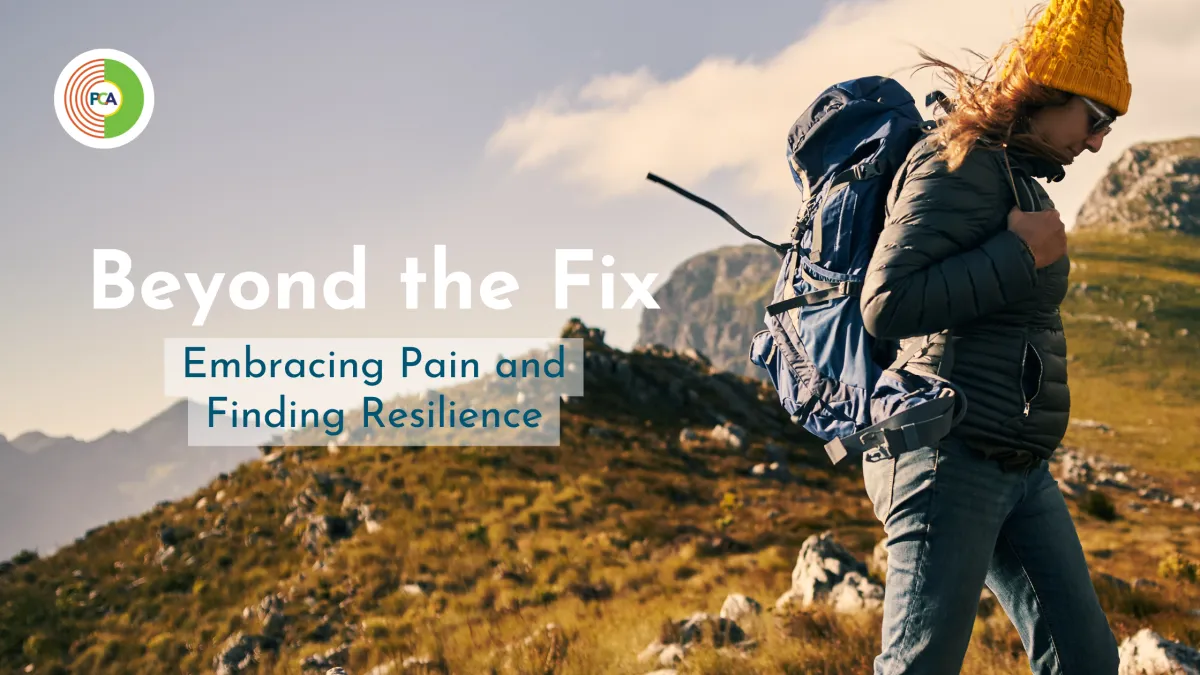
Beyond the Fix: Embracing Pain and Finding Resilience
When we hurt, it’s normal to want to “numb out” to it, distract ourselves, or find something to “fix” it. This solution-based approach to problems is nothing new. In fact, we’ve been taught to solve problems since elementary school.
At first glance, it may seem logical to want to fix something. After all, aren’t the best things in life born from the goals we put the most time and energy into? This is true to a degree; great things come out of effort. But what if there is another layer to this?
The history of humanity can teach us much about suffering and pain and how people have historically dealt with it. The Spanish explorer Álvar Núñez Cabeza de Vaca wrote a fascinating account of the Americas in the early 1500s. During an expedition into modern-day Florida, their vessel was shipwrecked, and only Cabeza de Vaca and four others survived. His account documents the intense suffering experienced by him and his companions, as well as the indigenous people they encountered. Following the shipwreck, their trek through the Americas took them from the Florida coast to modern-day Arizona.
Along the way, Cabeza de Vaca, his companions, and the indigenous people they lived with experienced cannibalism, starvation, thirst, disease, torture, cold, heat, and exhaustion of all kinds. The level of suffering documented in this account is unparalleled in anything I have heard or read about. By the end of their trek, they had accomplished great things. This included bringing healing to thousands of native peoples. It is an incredible story of the power of the human will to overcome adversity. So this begs the question, how did they cope with their pain?
During his adventure, Cabeza de Vaca encountered a tribe known as the Aguenes. His observation of them stated, “I believe these people see and hear better and have keener senses in general than any in the world. They know great hunger, thirst, and cold as if they were made for enduring these more than other men, by habit and nature.”
Rather than avoiding the pain, running away from it, masking or burying it to be dealt with another day, the native people in Cabeza de Vaca’s account had another way. His description of these people concludes that they were more tuned in to their feelings and senses than the average person. It seems that the habits and nature that he describes refer to their ability to be very present with what is. This was the superpower of the Aguene people! Knowing that they had no choice but to embrace suffering and use mindfulness as a refuge, they were able to cope with pain and use it as a catalyst for becoming more resilient. Of course, in their situation, the Aguenes often had no choice but to embrace suffering and pain. The circumstances of their life included times of cold, hunger, warfare, and various forms of physical discomfort.
In modern times, it can be difficult to embrace and surrender to our pain. We are promised a remedy for everything that ails us. For every ailment, there exists a multitude of creams, ointments, tinctures, pills, injections, surgeries, diets, etc. It is difficult to get ourselves out of this curative mindset, but what if the solution for pain is to stop trying to fix it and instead to become aware of what it is trying to tell you? This takes a radical commitment but can create a huge shift in the way we look at pain.
Let’s look at one way we might become more aware of what pain is trying to tell us. One helpful method is known as somatic tracking. In the United States, most of our body awareness tends to be the head because most jobs require constant thinking and problem-solving. Often neglected are the parts of us below the head, especially the lower extremities. Start by bringing awareness to your lower extremities. The feeling of your feet on the ground. Once you feel connected to your feet, move up to your ankles and calves. Continue moving up the body, noticing any subtle things that stand out to you. Maybe the breeze on your skin or where clothing makes contact. Also, don’t be afraid to bring awareness to the parts of your body that hurt. By avoiding what hurts, we create mental separation.
Connecting to your body with nonjudgemental awareness, however, restores our body and mind to a proper union. This practice can also be used if sleep is elusive and we are plagued by mental chatter. Bringing focused attention to our entire body helps the mind settle and can create a relaxing state that brings the mental, physical, and spiritual aspects of us into balance.
Letting go of a “fix-me” mindset isn’t easy; often, we can experience some inner discord with this idea. It’s essential to go slowly with yourself and implement these practices in a way that resonates with what you need at this stage in your life. These practices won’t erase your pain and suffering instantly but will make you a more well-rounded human being. Remember to be patient with yourself, and don’t expect to become an Aguene warrior overnight!
Cabeza de Vaca, A. N. (1961). Adventures in the Unknown Interior of America (C. Covey, Trans.) (p. 97). University of New Mexico Press.
Keep up to date with PCA's blog.
Stay Updated
Sign up with PCA today to stay connected.

